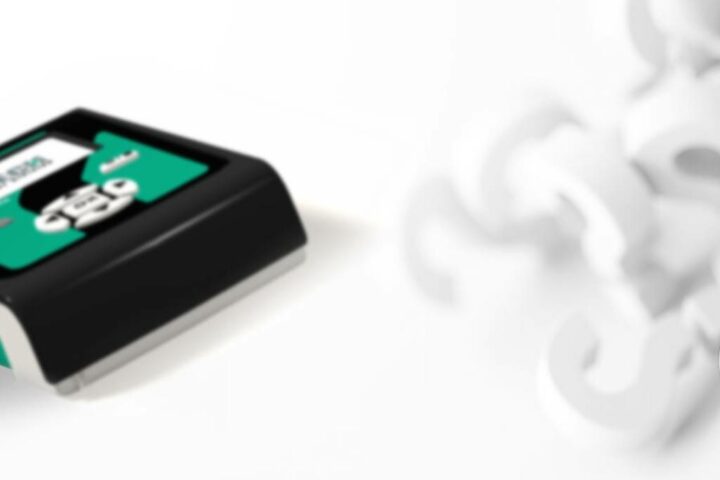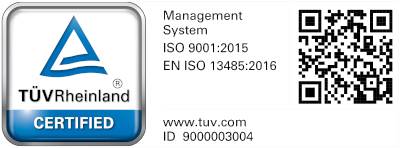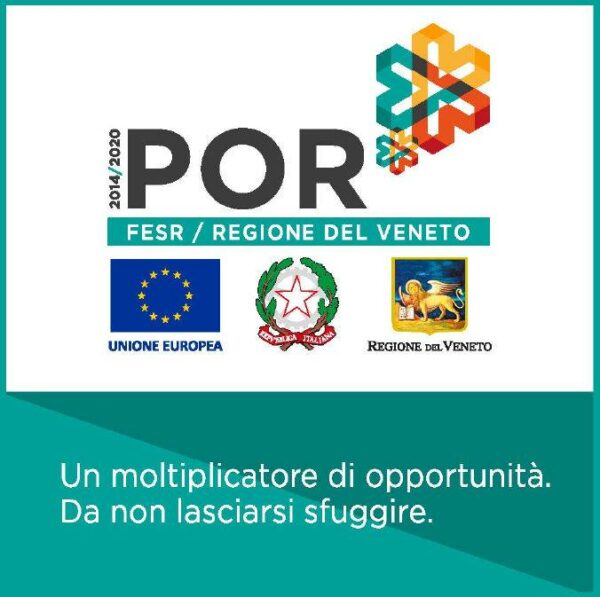When you first discover PEMF therapy, it is normal to have doubts: does it really work? Is it safe? How do you use it correctly? And which device should you choose from the many available?
As manufacturers of electro-medical devices, we know how important it is to have clear, reliable and easily understandable information. That’s why we have compiled this guide with the most frequently asked questions we receive every day from people who are new to this therapy.
Together, we will look at how PEMF therapy works, what benefits it can offer, what contraindications to consider and how to choose the most suitable device.
If you are looking for a non-invasive solution to reduce pain, promote healing or improve your quality of life, this guide is the right place to start to clarify your options and make informed decisions.
What types of PEMF therapy are there and what is the difference between low and high frequency?
PEMF therapy is mainly divided into low and high frequency, two modes that differ in depth of action and therapeutic indications.
- Low-frequency PEMF therapy (up to 100 Hz) penetrates deeper into the tissues. It is ideal for treating fractures, osteoarthritis, osteoporosis and deep inflammation.
- High-frequency PEMF therapy (up to hundreds of MHz) acts more on the surface, making it suitable for muscle problems, mild inflammation and soft tissue disorders.
Both are safe techniques and use Pulsed Electromagnetic Fields (PEMF), but the type of frequency to be used must always be chosen based on the doctor’s diagnosis.
What does the term PEMF mean?
PEMF is the acronym for Pulsed Electromagnetic Fields. It is often used as a synonym when referring to low or high frequency PEMF therapy.
Other acronyms commonly found in the literature are:
- CMP Pulsed Magnetic Fields
- PEMF Pulsed Electromagnetic Fields
- EMF Electro Magnetic Fields
All these terms refer to the same therapeutic technique, unlike constant magnetic fields represented by the use of permanent magnets (common magnets). In this case, there is no bibliography justifying its use in the medical/physiotherapy field.
How does PEMF therapy work?
PEMF therapy acts on the individual cells of the body by ‘recharging’ them with energy.
Living cells, both nerve and muscle cells, and generally all cells in the body, have an electrical potential called the resting membrane potential (Em). It is calculated from the difference in electrical charge inside and outside the cell and varies, depending on the type of cell, between -55 and -90 mV.
The lower this potential difference, the lower the vitality of the cell. In general, following muscle injury, trauma, wounds, illness, etc., the cells in the affected area lose some of their electrical charge. In other words, their potential difference varies.
In some cases, it is possible to replenish the lost charge: the electromagnetic field generated by the PEMF therapy device is able to transfer electrical charge to the cell itself. This is referred to as cellular biostimulation, an action that ‘awakens’ the cell by reactivating the body’s self-healing process.
Why is PEMF therapy effective against pain?
This effectiveness is based in particular on the pulsation of the electromagnetic field, which is activated and deactivated alternately in rapid sequence. This mechanism affects the cell, which is stimulated by the sequence of electromagnetic fields. These in turn transfer energy to the cell, recharging it electrically.
The biological changes induced by magnetic fields on biological membranes, cells and vessels determine various types of therapeutic effects: anti-inflammatory, anti-oedema and tissue repair stimulation.
The benefit of muscle relaxation achieved with PEMF therapy also helps to improve microcirculation, relax smooth fibres and produce a vasodilatory effect. The release of endorphins helps to raise the pain threshold, and slight hyperaemia produces an anti-inflammatory effect.
What are the most important effects of PEMF therapy?
The main purpose of PEMF therapy is to electrically recharge cells, which is why it is often referred to as cellular biostimulation.
The effects produced in the human body are varied, but here are the most important ones:
- Osteogenesis: PEMF therapy stimulates the activity of osteoblasts, the cells responsible for bone tissue regeneration. This is why PEMF therapy, especially low-frequency PEMF therapy, is recommended for all bone tissue disorders, such as osteoarthritis and osteoporosis. It is also highly recommended for delayed calcification following fractures.
- Analgesic effect: relaxation of the muscle tissue decompresses the adjacent tissues, raising the pain threshold and improving circulation. This is thanks to the reduction in pressure on the arterioles and venules and everything that contributes to slowing down the inflammatory process.
- Relaxing effect on smooth and striated muscles: it acts on muscle contractures, relaxing the fibres. At the same time, it helps to decompress the joints on which the affected muscles act, freeing them from excessive pressure.
How long does it take to feel the first benefits?
The timing can vary from person to person and depending on the condition being treated. In some cases, an improvement can be felt after 30 days, while in other situations—especially in the case of chronic conditions or fractures—the benefits become apparent at the end of the treatment cycle.
It is important to be consistent and complete the entire recommended treatment cycle.
Are there many contraindications for PEMF therapy?
PEMF therapy is one of the physical therapies with the fewest contraindications, as highlighted by numerous clinical studies conducted with pulsed electromagnetic fields.
However, some basic precautions indicated in the user manuals must be observed, concerning: pregnant women, tuberculosis, juvenile diabetes, viral diseases (in the acute phase), fungal infections, individuals with heart disease, cancer, severe arrhythmias or pacemakers, children, individuals with magnetisable prostheses, acute infections or epilepsy (unless otherwise prescribed by a doctor).
Most contraindications are indicated as a precaution by manufacturers who tend to protect themselves to avoid potential risks.
As for magnetisable prostheses, we would like to point out that they have not been on the market or in use for at least 40 years. In particular, modern hip or knee prostheses do not interact in any way with the electromagnetic fields of PEMF therapy.
Further proof that the magnetic field is harmless to the body (except for the warnings described above) is confirmed by an object we come into contact with every day. No one worries about whether a normal magnet emitting up to 4000 Gauss of intensity is harmful. Yet we are in constant contact with magnets of all kinds every day! Just think, for example, of those contained in mobile phone batteries, loudspeakers, etc.
Can I use PEMF therapy together with other physical therapies?
Yes, PEMF therapy can be combined with other physical therapies such as laser therapy, ultrasound or traditional physiotherapy. In many rehabilitation protocols, it is used in combination with other therapies to enhance their effects and speed up recovery.
Of course, it is always best to follow the instructions of your specialist doctor or physiotherapist, who will assess the right combination based on your clinical picture and give you guidance on how often to use one device over another.
How long and how many times a day can PEMF therapy be used?
For effective PEMF therapy treatment, it is essential to consult your doctor first to identify the condition you are suffering from.
In general, PEMF therapy requires medium to long treatment times. We recommend cycles of 45-90 days with a minimum duration of 3 hours per day, unless otherwise indicated by your doctor. If necessary, the treatment can be repeated several times during the year. For example, in cases of osteoarthritis, arthritis, osteoporosis and joint pain.
In any case, there is no risk of overdose. In fact, as in the case of osteoporosis treatments, night-time therapy can be carried out for several consecutive hours.
Are PEMF therapy devices effective?
PEMF therapy has been a well-established therapy for decades and its effectiveness is universally recognised.
There are numerous clinical studies in the literature reporting the effectiveness of PEMF therapy in the treatment of various conditions. In particular, it is effective on bone tissue but also for muscle and ligament problems.
To learn more about the clinical references supporting PEMF therapy, visit the Bibliography page.
How to choose the right PEMF therapy device?
The market offers a very wide range of PEMF therapy devices. It can be difficult for the end user to navigate the different models, which differ in the number of programmes, type of applicator and, last but not least, price. In this regard, we recommend that you read our guide to purchasing the most suitable PEMF therapy devices.
First of all, it is essential to ensure that the device is a medical device with the relevant CE certificate issued by an authorised body recognised by the Ministry of Health and compliant with European MDR regulations. This documentation is public and therefore available upon request by the end user or can be downloaded from the dedicated website.
This check allows you to make an accurate selection, eliminating all devices that are not certified and therefore not reliable.
Once this aspect has been clarified, it is best to choose the model that allows you to carry out the treatment as indicated by the medical diagnosis.
How often should the purchased device be checked?
PEMF therapy devices have several advantages over other physical therapy machines. For example, they do not require consumables such as gels or pre-gelled electrodes that need to be purchased after a certain number of treatments.
The components of the machine itself are not particularly critical, as is the case with other therapies. For example, laser devices require careful maintenance due to the consumption of the laser diode that produces the light beam.
Guidelines for medical devices suggest checking the efficiency and safety of the device every two years. However, a PEMF therapy device, if used and stored correctly, can last a lifetime.
PEMF therapy is a non-invasive therapeutic technique supported by numerous scientific studies. Knowing the benefits, indications and methods of use is the first step towards making an informed choice.
Choosing the most suitable therapy is the first step towards well-being. If you need help or want to know more, our customer care team is here for you, with all its experience and expertise.






